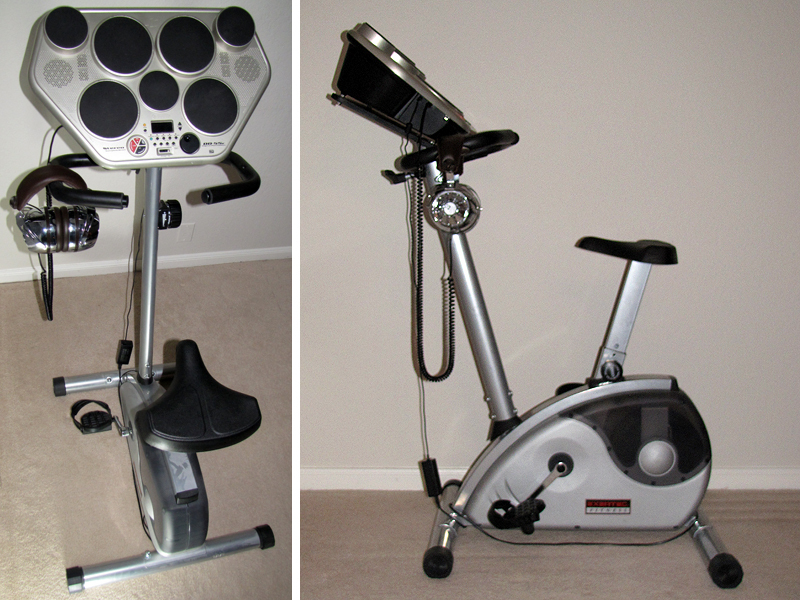A recent toe injury kept me from running for a few weeks, and I bought a stationary bike to keep in shape while recovering. The exercise bike has a lot to recommend it: it’s low-impact, safe, easy to scale up for harder workouts, and indoors out of the weather.
It’s also as boring as watching paint dry.
I tried a lot of tricks to distract myself from staring at the clock while riding–reading, watching movies, playing video games. None of it really worked, for me. Then, one day I caught myself drumming on the handlebars in time to the movement of the pedals, and an idea occurred to me. I bought a refurbished Yamaha DD55 tabletop digital drumset and mounted it in place of the bike’s (fairly useless) readout panel.
At the risk of hyperbole, the result has been almost miraculous. Before, riding the bike was a chore and I would count down the minutes and seconds until I could stop; now, I am often taken by surprise when my workout timer goes off, and I’ll actually keep riding for a few more minutes so I can finish working out whatever rhythm I am playing. I look forward to riding the bike, and find myself jumping on it and riding when I feel restless or need to relax.


